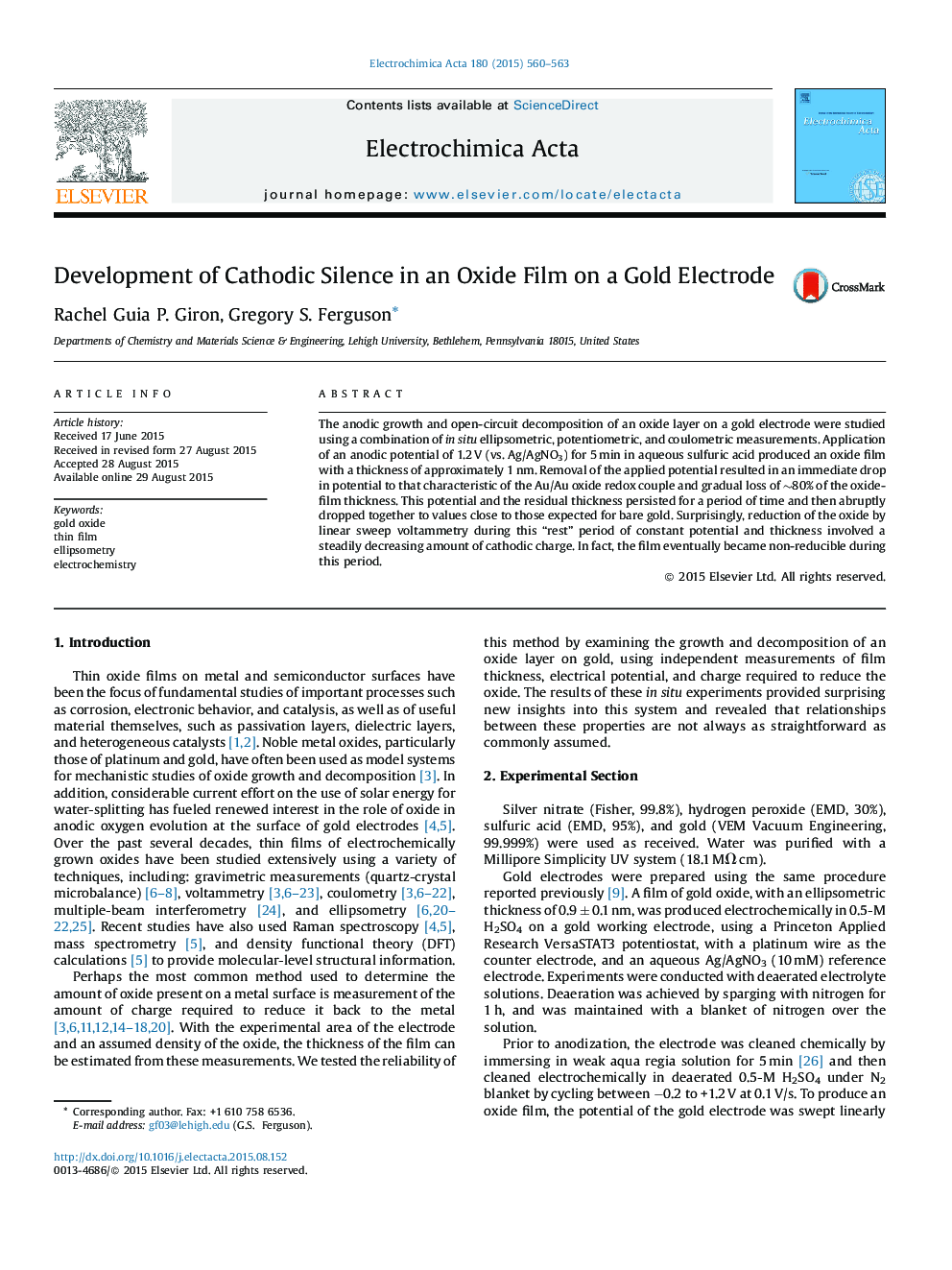| Article ID | Journal | Published Year | Pages | File Type |
|---|---|---|---|---|
| 6610414 | Electrochimica Acta | 2015 | 4 Pages |
Abstract
The anodic growth and open-circuit decomposition of an oxide layer on a gold electrode were studied using a combination of in situ ellipsometric, potentiometric, and coulometric measurements. Application of an anodic potential of 1.2Â V (vs. Ag/AgNO3) for 5Â min in aqueous sulfuric acid produced an oxide film with a thickness of approximately 1Â nm. Removal of the applied potential resulted in an immediate drop in potential to that characteristic of the Au/Au oxide redox couple and gradual loss of â¼80% of the oxide-film thickness. This potential and the residual thickness persisted for a period of time and then abruptly dropped together to values close to those expected for bare gold. Surprisingly, reduction of the oxide by linear sweep voltammetry during this “rest” period of constant potential and thickness involved a steadily decreasing amount of cathodic charge. In fact, the film eventually became non-reducible during this period.
Related Topics
Physical Sciences and Engineering
Chemical Engineering
Chemical Engineering (General)
Authors
Rachel Guia P. Giron, Gregory S. Ferguson,
